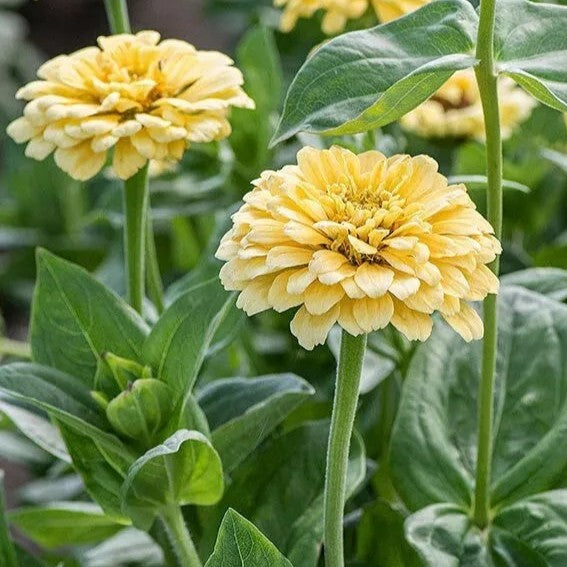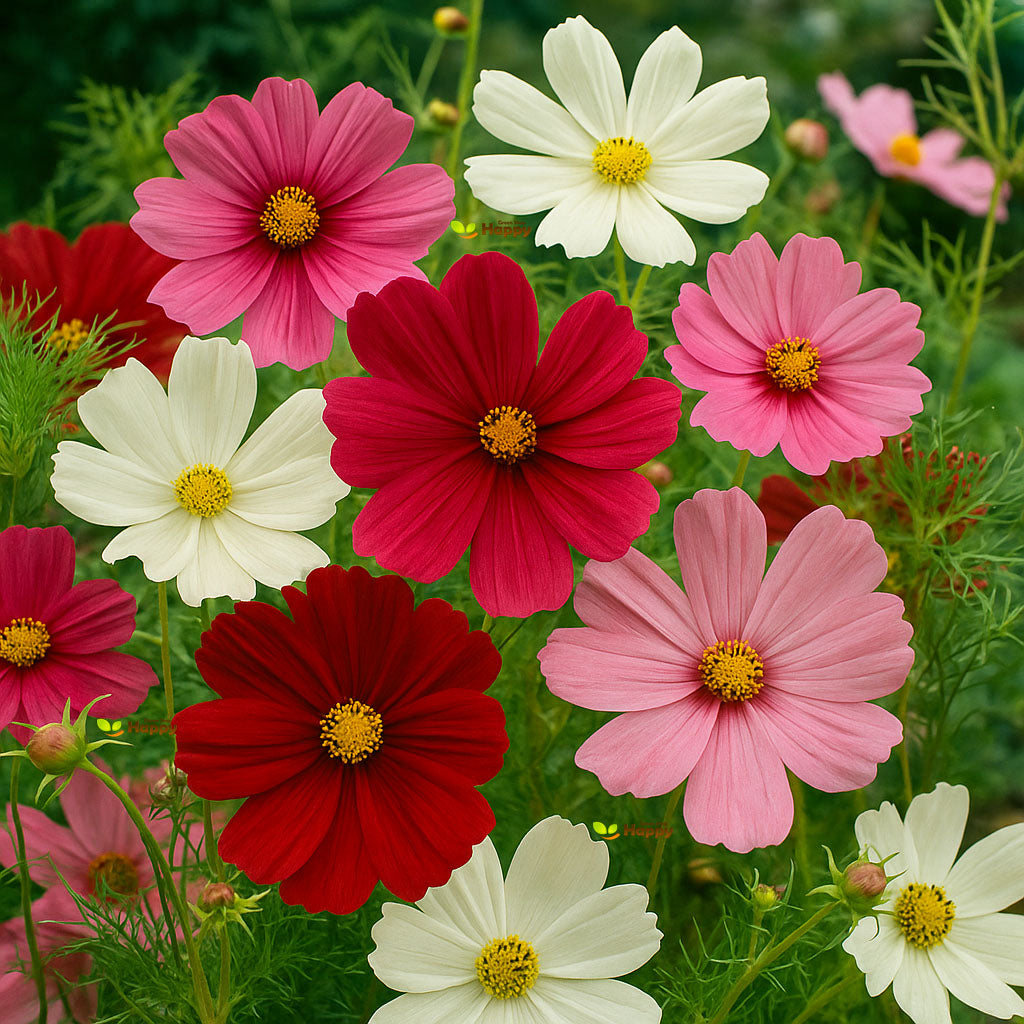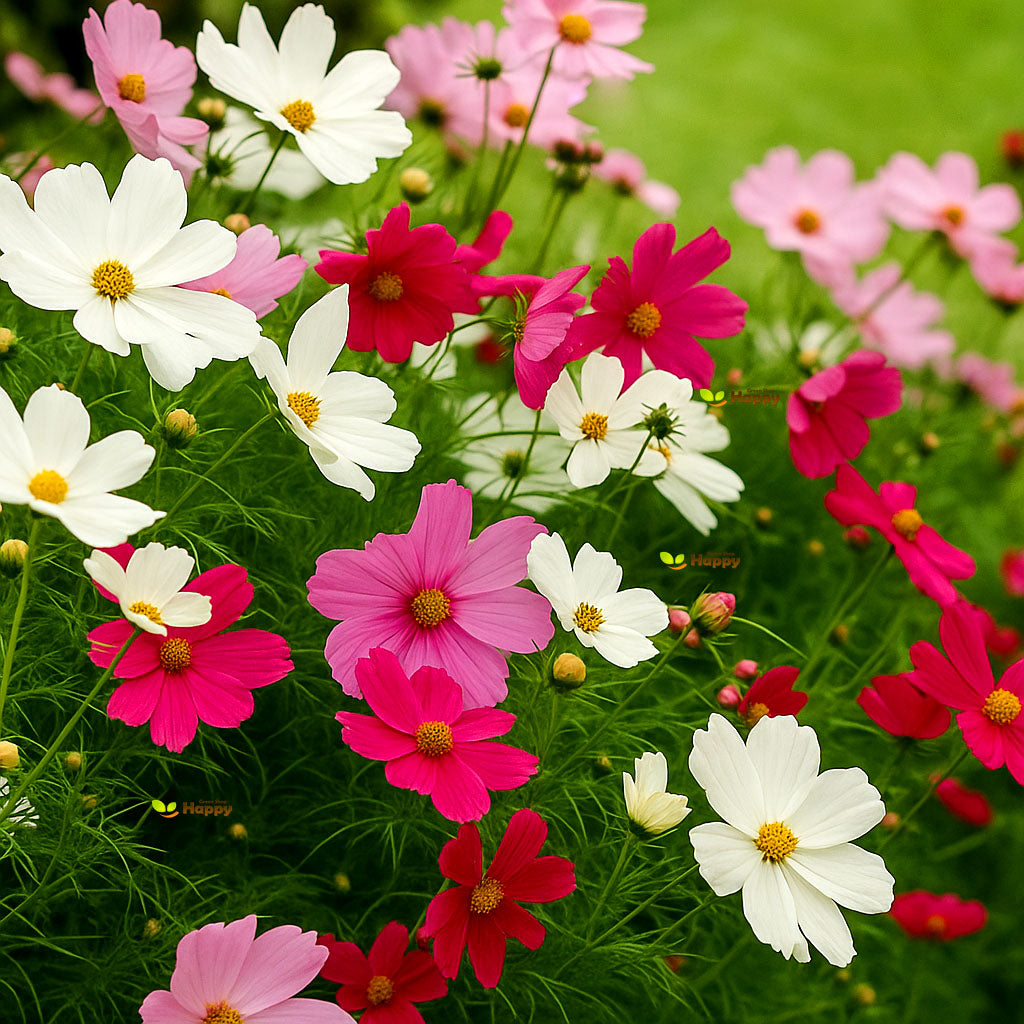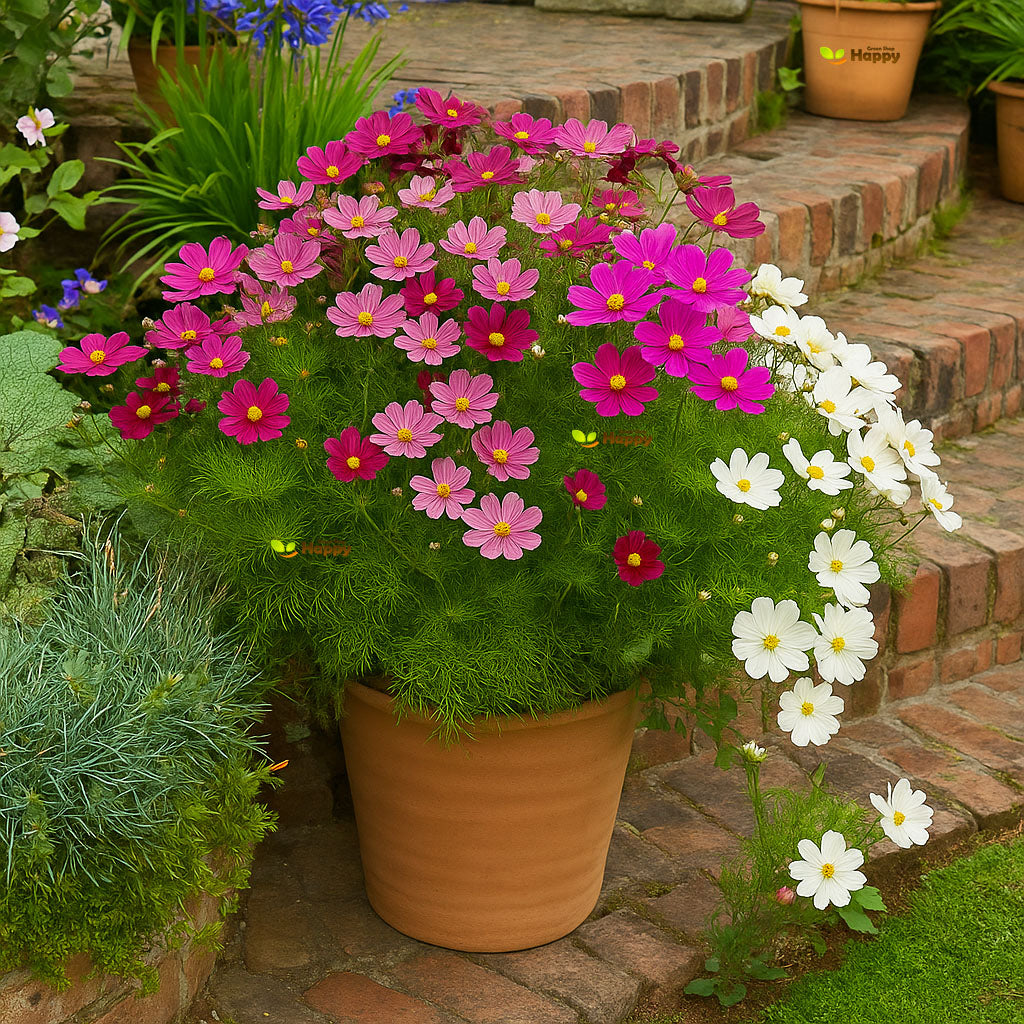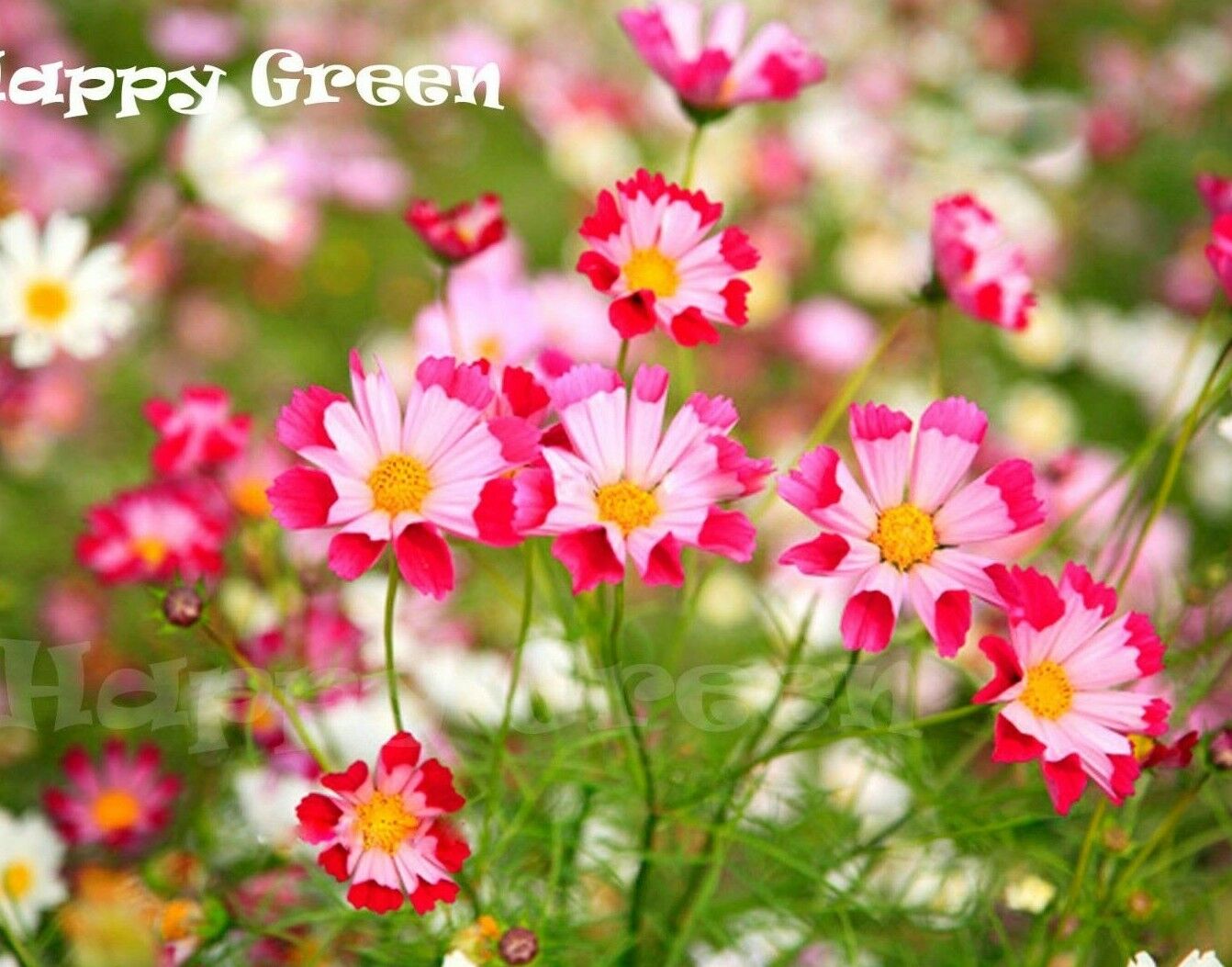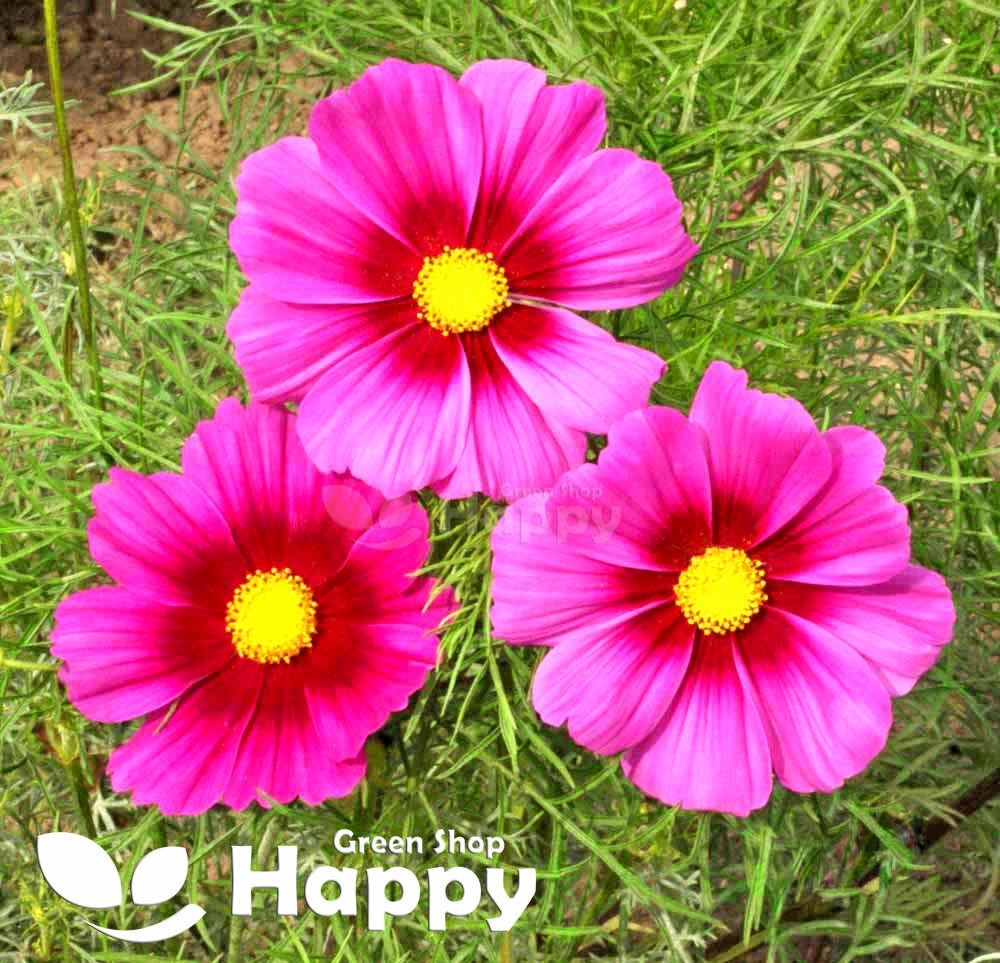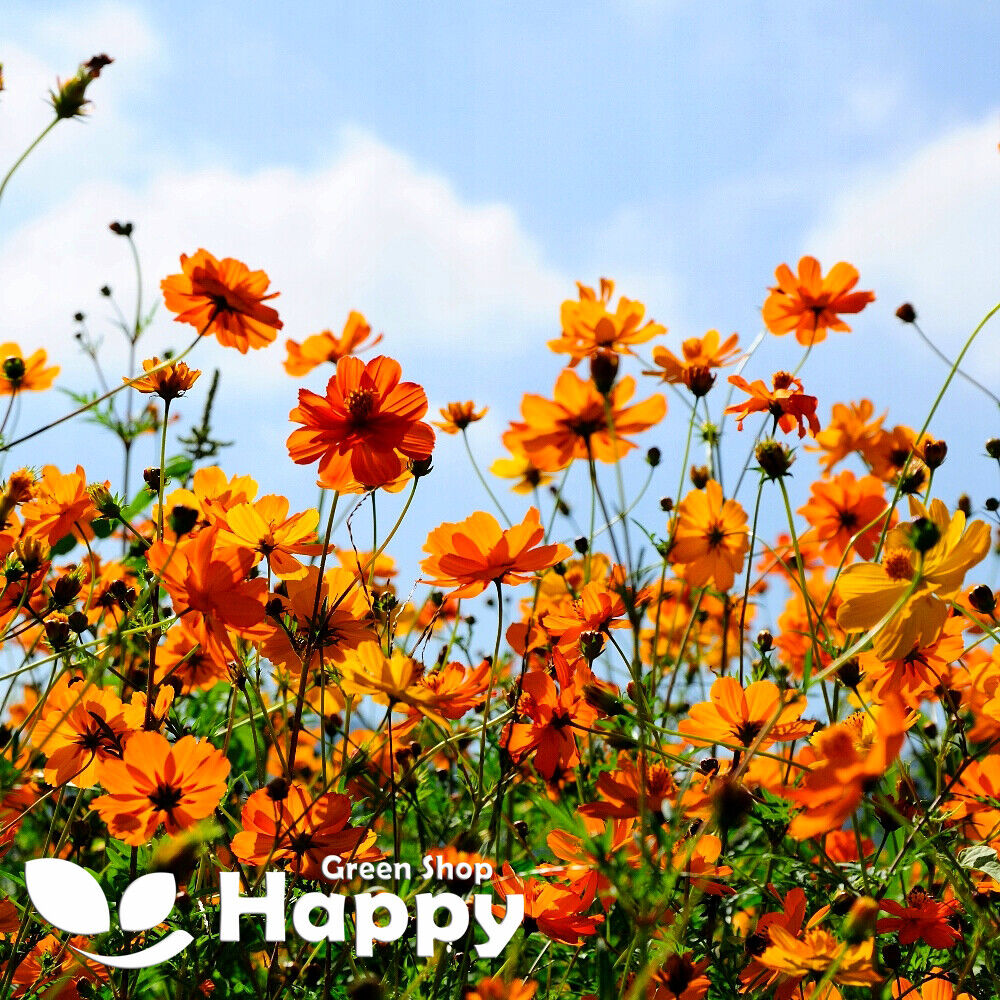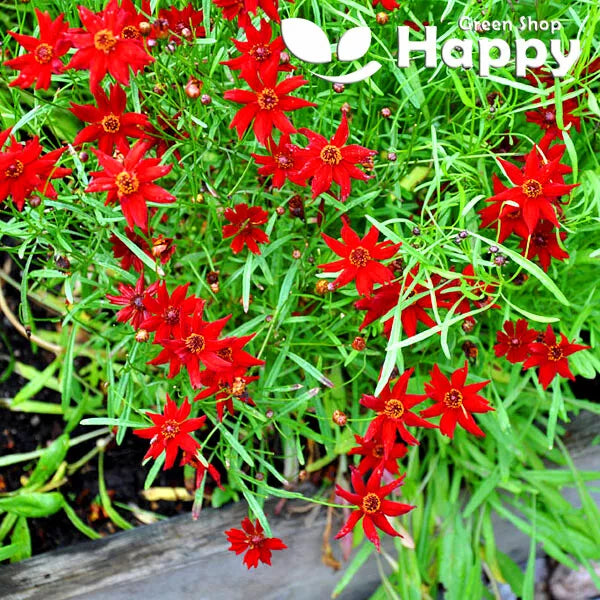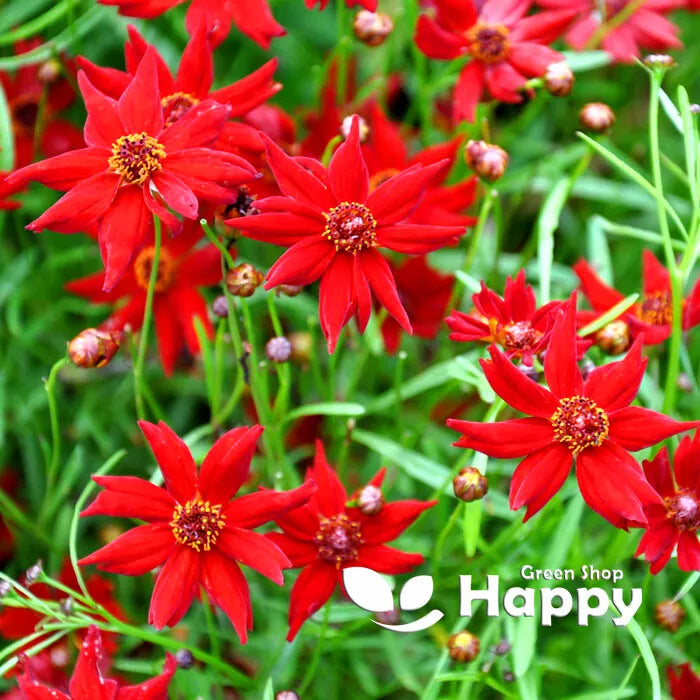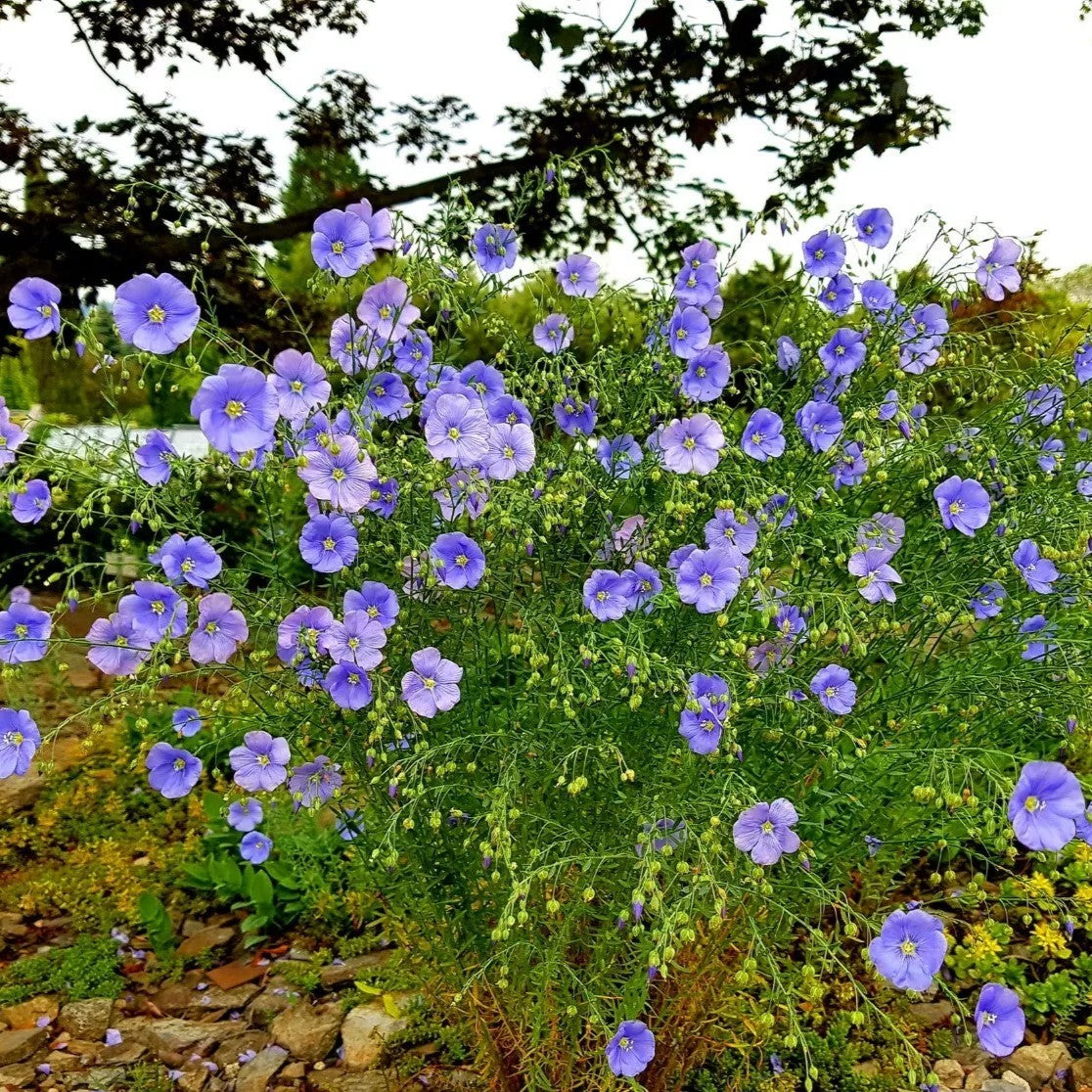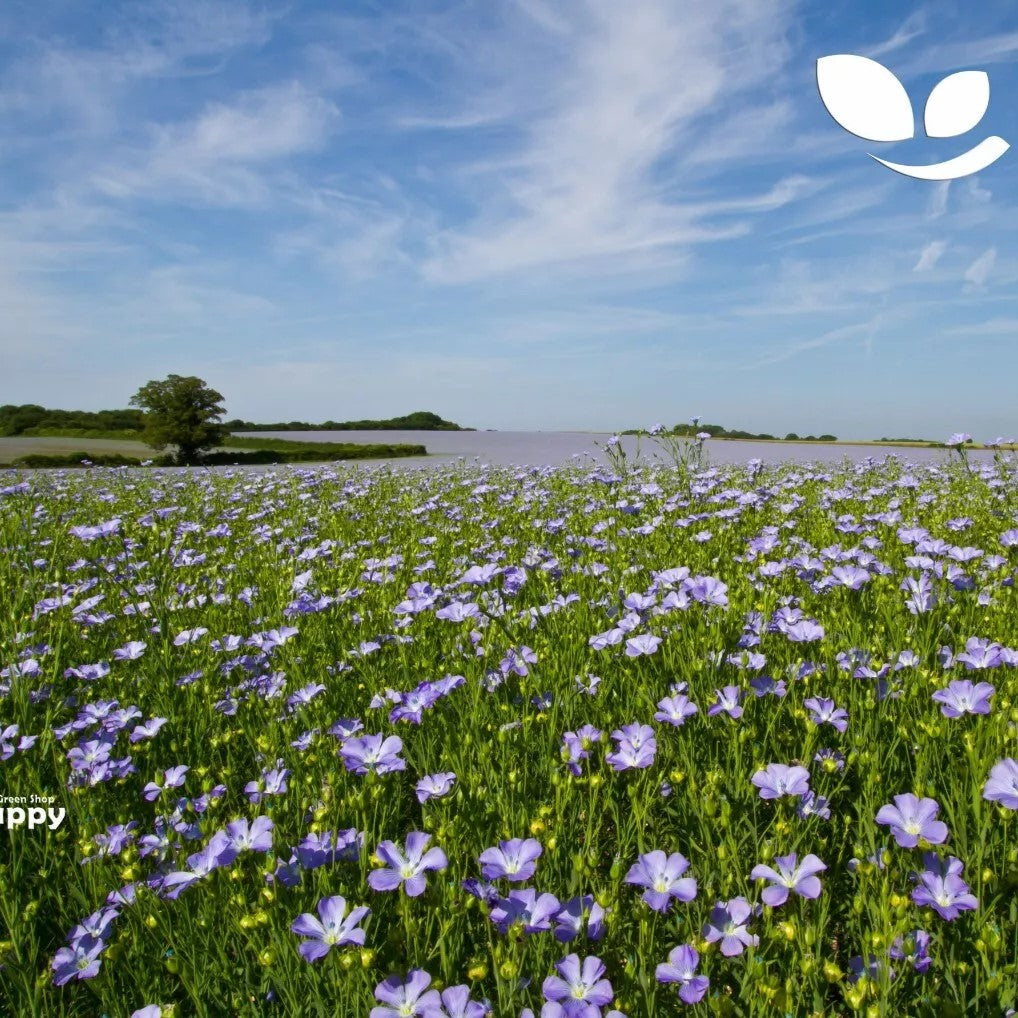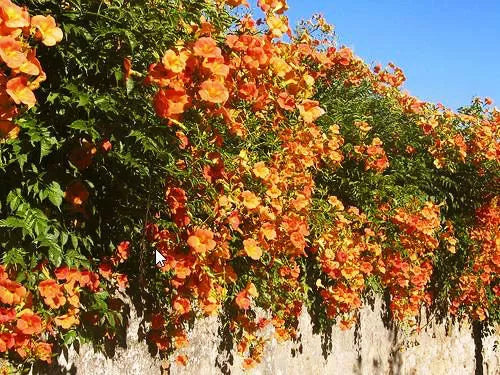Sort by:
180 products
180 products
Cosmos 'Sensation' Mix – Seeds (Cosmos bipinnatus)
The Cosmos 'Sensation' mix is a classic cottage garden favorite, producing masses of large, daisy-like blooms in shades of pink, carmine, red, and pure white. With delicate, fern-like foliage and tall, graceful stems, this variety adds a light and airy charm to borders, wildflower meadows, and cut flower displays. Easy to grow and quick to bloom, it is an excellent choice for beginners and seasoned gardeners alike.
Highlights
-
Large daisy-like flowers in a vibrant color mix
-
Ferny foliage and tall, elegant stems
-
Long flowering season, from summer to autumn
-
Excellent for cut flowers
-
Hardy and easy to grow
Key Features
-
Botanical Name: Cosmos bipinnatus
-
Variety: 'Sensation' Mix
-
Seed Count: Approx. seeds per pack
-
Height/Spread: 90–120 cm tall, 40–50 cm spread
-
Position: Full sun, well-drained soil
-
Flowering Period: June–October
Perfect For
-
Cottage gardens
-
Wildflower-style plantings
-
Borders and background color
-
Cut flower arrangements
Sowing Instructions
-
Sow indoors March–April at 18–21°C
-
Cover seeds lightly with fine compost or vermiculite
-
Germination: 7–10 days
-
Harden off and plant out after the last frost, spacing 30–40 cm apart
-
Alternatively, sow direct outdoors April–May where plants are to grow
Cosmos ‘Sea Shell’ Mix – Seeds (Cosmos bipinnatus)
The Cosmos ‘Sea Shell’ Mix is a striking and unusual variety of cosmos, admired for its distinctive tubular petals that resemble delicate sea shells. Blooms appear in vibrant shades of pink, carmine, rose, and white, creating a romantic, airy effect in the garden. This tall, free-flowering annual adds elegance to borders and makes excellent cut flowers.
Highlights
-
Unique tubular, seashell-shaped petals
-
Tall, graceful plants with airy foliage
-
Continuous blooms all summer into autumn
-
Attracts butterflies, bees, and pollinators
Key Features
-
Botanical Name: Cosmos bipinnatus
-
Variety: ‘Sea Shell’ Mix
-
Seed Count: Approx. seeds per pack
-
Height/Spread: 90–120 cm tall, 30–45 cm spread
-
Position: Full sun, well-drained soil
-
Flowering Period: June–October
Perfect For
-
Cottage gardens and wildflower-style borders
-
Tall background planting
-
Cutting for long-lasting vase displays
-
Pollinator-friendly gardens
Sowing Instructions
-
Sow indoors March–April at 18–21°C
-
Cover seeds lightly with compost
-
Germination: 7–10 days
-
Harden off and plant out after frost, spacing 30–40 cm apart
-
Can also be direct sown outdoors April–May
Cosmos 'Radiance' – Seeds
(Cosmos bipinnatus)
Cosmos 'Radiance' is a charming variety that produces large, daisy-like blooms in deep carmine-pink with a lighter halo around the golden-yellow centers. The graceful, feathery foliage and long, slender stems make it a superb choice for garden displays and cut flowers. Easy to grow and long-flowering, it’s a true summer favourite.
Key Features
-
Type: Half-hardy annual
-
Height: 90–120 cm
-
Spread: 40–50 cm
-
Flowering: June–October
-
Position: Full sun
-
Soil: Well-drained, moderately fertile
Ideal For
-
Cottage gardens
-
Wildlife and pollinator-friendly planting
-
Borders and background planting
-
Cut flower arrangements
Sowing & Growing
-
Sow indoors: March–April at 18–21°C
-
Sow outdoors: May–June directly in final position
-
Germination: 7–10 days
-
Thin/transplant to 30–40 cm spacing
-
Deadhead regularly for prolonged flowering
Cosmos ‘Polidor’ Mix – Seeds (Cosmos sulphureus)
The Cosmos ‘Polidor’ Mix is a dazzling, warm-toned variety producing masses of semi-double blooms in shades of gold, orange, and scarlet-red. Unlike the softer pastel cosmos, this species (Cosmos sulphureus) is more compact, with bushy growth and excellent heat tolerance. Perfect for bright summer borders and butterfly gardens.
Highlights
-
Vivid warm shades: yellow, orange, and red
-
Semi-double flowers with a cheerful, fiery look
-
Excellent for hot, sunny, dry spots
-
Attracts bees, butterflies, and pollinators
Key Features
-
Botanical Name: Cosmos sulphureus
-
Variety: ‘Polidor’ Mix
-
Seed Count: Approx. seeds per pack
-
Height/Spread: 60–90 cm tall, 30–45 cm spread
-
Position: Full sun, well-drained soil
-
Flowering Period: July–October
Perfect For
-
Adding vibrant warm tones to garden beds
-
Containers, borders, and cutting gardens
-
Low-maintenance summer displays
-
Pollinator-friendly plantings
Sowing Instructions
-
Sow indoors March–April at 18–21°C
-
Cover seeds lightly with compost
-
Germination: 7–14 days
-
Harden off and transplant outdoors after frost, spacing 25–30 cm apart
-
Can also be direct sown outdoors May–June
Corn Cockle – Seeds (Agrostemma githago)
Corn Cockle (Agrostemma githago) is a classic wildflower that brings simple charm to any garden. Its tall stems carry graceful, cup-shaped magenta-pink blooms that sway beautifully in the breeze. Once common in cornfields, this heritage flower is now treasured for wildflower meadows, cottage gardens, and naturalistic plantings. Easy to grow and loved by pollinators, it thrives in sunny, well-drained soil.
Why Grow "Corn Cockle"
-
Bright magenta-pink wildflower blooms
-
Tall, graceful stems for naturalistic planting
-
Heritage flower once common in fields
-
Attracts bees and pollinators
Key Features
-
Type: Hardy annual (Agrostemma githago)
-
Height: 60–90 cm
-
Flowering: June–September
-
Position: Full sun
-
Uses: Wildflower meadows, borders, cut flowers
Ideal For
-
Naturalistic and wildlife gardens
-
Wildflower meadows and cottage planting
-
Pollinator-friendly spaces
-
Tall, airy accents in borders
Sowing & Growing
-
Sow outdoors: March–May or August–September
-
Sow direct into prepared soil, lightly cover
-
Germination: 14–21 days
-
Thin seedlings to 25–30 cm apart
-
Prefers full sun and well-drained soil
Coreopsis ‘Amulet Red’ – Seeds
(Coreopsis tinctoria)
Coreopsis ‘Amulet Red’ is a striking annual that produces masses of deep red, daisy-like blooms throughout summer. Its long-lasting flowers attract bees, butterflies, and other pollinators, making it both a decorative and wildlife-friendly choice. Perfect for borders, wildflower gardens, and cutting.
Why Grow Coreopsis ‘Amulet Red’?
-
Abundant deep red daisy-like flowers
-
Long flowering season from summer to autumn
-
Attracts bees, butterflies & pollinators
-
Easy to grow and low-maintenance
Key Features
-
Type: Hardy annual
-
Height: 45–60 cm
-
Flowers: June–October
-
Position: Full sun
-
Soil: Well-drained, moderately fertile
Ideal For
-
Borders and cottage gardens
-
Wildflower-style plantings
-
Pollinator-friendly gardens
-
Cut flower arrangements
Sowing & Growing
-
Sow outdoors: April–May in prepared soil, thin seedlings as needed
-
Sow indoors: March–April in trays, plant out after last frost
-
Germination: 7–14 days at 18–22°C
-
Spacing: 20–25 cm apart
-
Deadhead spent blooms to prolong flowering
Coneflower ‘Green Twister’ – Seeds (Echinacea purpurea)
Description:
Add a striking twist to your garden with Coneflower ‘Green Twister’ (Echinacea purpurea), an extraordinary variety featuring bi-colored petals that blend lime green edges into vivid magenta centers. This hardy perennial blooms from midsummer to autumn, attracting bees, butterflies, and pollinators. Easy to grow and drought-tolerant once established, it’s perfect for borders, wildlife gardens, and long-lasting cut flower displays.
Key Features
-
Unique green and pink bi-colored petals
-
Long-lasting blooms from summer to autumn
-
Hardy perennial and drought-tolerant
-
Excellent cut flower with strong stems
-
Attracts bees, butterflies, and pollinators
Ideal For
-
Cottage and wildlife gardens
-
Flower borders and mixed beds
-
Pollinator-friendly plantings
-
Cut flower arrangements
Sowing & Growing
-
Sow Indoors: February–April
-
Transplant Outdoors: May–June
-
Germination: 14–21 days at 18–22°C
-
Flowering: July–September
-
Height: 70–90 cm
-
Spacing: 30–45 cm apart
-
Light: Full sun
-
Soil: Well-drained, moderately fertile
Care Tips
-
Water young plants regularly until established
-
Deadhead to encourage extended flowering
-
Cut back in autumn for tidy regrowth
-
Drought-tolerant once mature
COMMON FLAX SEEDS (Linum usitatissimum)
Common Flax is a graceful annual grown for both beauty and usefulness. Its slender stems are topped with delicate sky-blue flowers, creating a soft, natural look in borders, beds, and wildflower gardens. Easy to grow and low-maintenance, it also produces valuable seeds traditionally used for culinary and health purposes.
Why Grow "Common Flax"
-
Delicate sky-blue blooms with natural charm
-
Easy-to-grow, low-maintenance annual
-
Produces edible seeds
-
Ideal for borders, beds, and wildflower gardens
Key Features
-
Type: Annual (Linum usitatissimum)
-
Height: 40–60 cm
-
Flowering: Summer (June–August)
-
Position: Full sun
-
Uses: Borders, flower beds, wildflower areas, seed harvesting
Ideal For
-
Adding soft blue tones to borders and cottage gardens
-
Wildflower meadows and naturalized areas
-
Harvesting flax seeds for home use
-
Beginner-friendly gardening
Sowing & Growing
-
Sow outdoors: Directly into soil in spring after frost
-
Germination: 10–14 days
-
Thin seedlings: 10–15 cm apart
-
Prefers full sun and well-drained soil
Climbing Flower Mix – 3 g Seeds
Transform fences, trellises, and arches with this colorful Climbing Flower Mix. Including Mina (Spanish Flag), Sweet Pea, Cobaea (Cup-and-Saucer Vine), climbing beans, and Morning Glory, this blend offers a succession of vibrant flowers and lush foliage throughout summer. Easy to grow, fast-climbing, and perfect for vertical gardens.
Why Grow "Climbing Flower Mix"
-
A vibrant blend of climbing annuals
-
Covers fences, arches, and trellises quickly
-
Long-lasting color all summer
-
Attracts bees and pollinators
Key Features
-
Type: Annual climbing flower mix
-
Height: 1.5–3 m (varies by species)
-
Flowering: June–October
-
Position: Full sun
-
Uses: Trellises, fences, arches, vertical gardening
Ideal For
-
Vertical garden displays
-
Brightening fences and walls
-
Arches and pergolas
-
Pollinator-friendly plantings
Sowing & Growing
-
Sow indoors: March–April in pots
-
Sow outdoors: April–May after frost
-
Germination: 7–21 days depending on species
-
Provide strong support for climbing
-
Regular watering encourages lush growth
Showing 153/180




